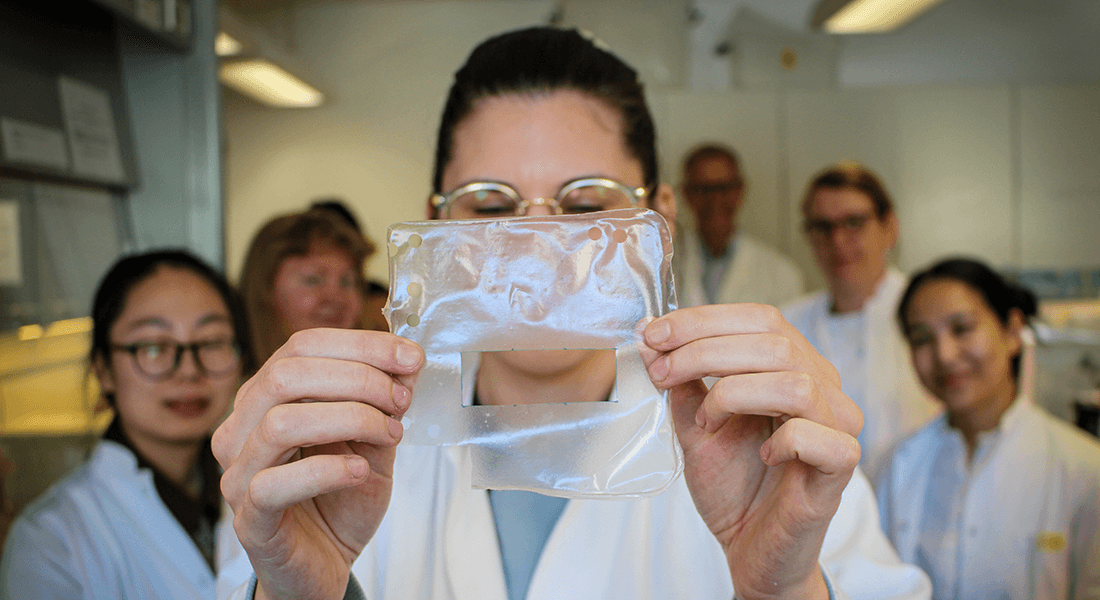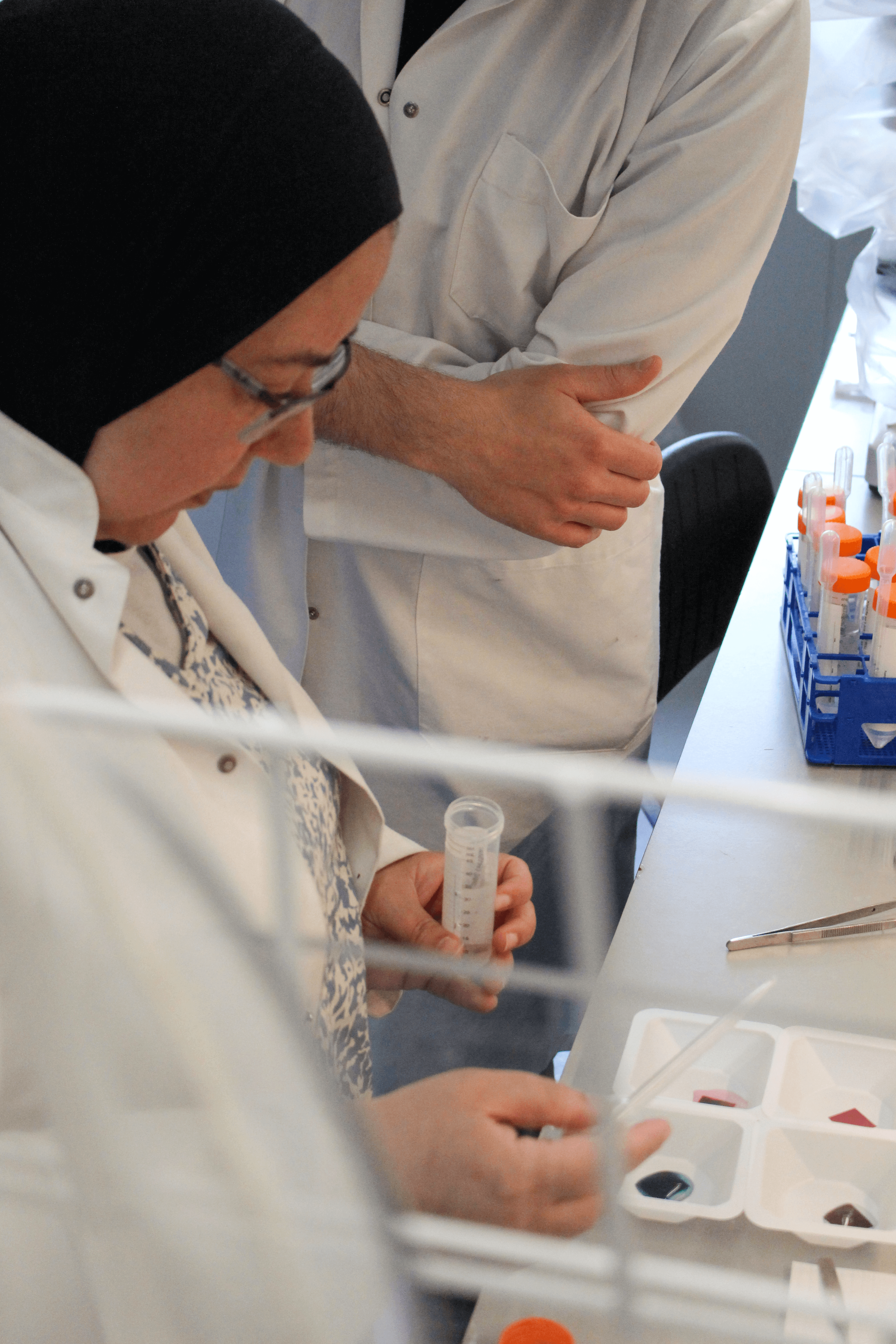Starch from plants is key to bioplastic that is actually degradable
Professor Andreas Blennow’s research group experiments with bioplastics, nutritionally healthy crops and antibiotic multiresistance, but sustainability is the bond that ties Starch together.

Today’s bioplastics are not fully biodegradable. Left in the environment, they will stay there for a long time. Bioplastics can’t replace conventional plastics before someone creates a material that is as durable as plastic, but biodegradable.
Someone is trying to do exactly that in the Starch research group in the Department of Plant & Environmental Science at the University of Copenhagen. A mixture of designer starch from modified crops like potatoes and waste fibres from sugar beets may be the solution.
“Just 9% of all plastic waste ever created has been recycled. We can’t teach people to do that. Plastic will appear outside, and when it does, it should decompose. Our bioplastic is fully decomposable. The problem is that it shouldn’t decompose when we're using it,” said Professor Andreas Blennow, the research group leader.
He is giving a tour in his lab, where different projects are working on solving some of the biggest environmental and health problems in the world. All projects have one thing in common: Starch.
“Starch is a raw material that we can use for bioplastics, nutrition and nanoparticles. This is the beauty of starch. Starch comes with many different qualities and functionalities,” Blennow said.
Food packaging that is sustainable, healthy and safe
Here scientists are working on bio-derived, all-natural and compostable bioplastics for packaging, especially food. After several experiments, they have made the strongest result when a fraction of the starch called amylose is high and mixed with the proper ratio of cellulose nanofibres.
Starch is a raw material that we can use for bioplastics, nutrition and nanoparticles. This is the beauty of starch. Starch comes with many different qualities and functionalities.
The pure-starch plastic prototype is actually as strong as normal plastic. The problem is that it’s brittle. Like steel, it’s hard, but it breaks. It will also be sensitive to water. That is why you need to add bendy fibres and natural plasticizers to make it more like plastic.
“We are trying to reinforce the starch matrix with nanocellulose crystals and nanocellulose fibres,” explained Marija Zmiric, a master student.

“The difference is that the crystals made from wood are short, wide, and straight, while the fibres from waste sugar beet pulp are flexible and longer. So we thought that there would be a difference between the two and wanted to know how they improved the properties of the plastics. So far it looks like the fibres are doing a little better, but both crystals and fibres improve the bioplastic.”
The fibres are derived from pulp in sugar beets. Starch is meant to be degraded, but cellulose isn’t, so finding the right ratio between degradable and robustness is key to improving current bioplastics.
“The ultimate goal is to replace conventional plastics and we are aiming for food packaging. We would love to develop something that can replace the existing plastics, which are not biodegradable,” Zmiric said.
Using CRISPR to make ideal crops
The materials used in the experiments are no ordinary crops. Using CRISPR-Cas9, some group members are trying to design crops like potatoes that have a high amylose content, making them excellent for bioplastic production.
“Starch contains two main components. One is amylose, which is linear, and the other is amylopectin, which is branched. We want to turn off the genes producing amylopectin and raise the level of amylose. Amylose is the good guy here,” said Associate Professor Bent L Petersen.
PhD student Marwa Faisal made prototypes of pH-indicator films that are bright red and changes colour to blue, green or yellow once the food inside turns rancid and is no longer safe to eat.
“The pH-indicator has an antioxidant activity that will keep the food fresh for longer. The next part is to extend the shelf life of the bio packaging itself. This bioplastic film is non-toxic, meaning you can even safely use it,” she said.
People eat too much starch, so let’s make it healthier
But besides bioplastics, the group juggles with many other properties of starch. The next project revolves around optimizing the nutritional value of starchy food.
Starch is an essential source of food and energy. Of the top 5 crops produced in the world, four are grown for their high starch contents. These are maize, wheat, rice and potatoes (sugarcane is number one). Overly starchy diets in Western countries have led to an increase in type 2 diabetes and other lifestyle diseases.
“Our early human ancestors were not built to eat French fries, so our bodies struggle with processing the sudden high levels of sugar in the body when we depend on starch,” Blennow said.
Again, a high amylose content seems help to regulating uptake and release of glucose into the bloodstream. Even if you’re diabetic, you can metabolize the small amount of glucose that is generated, because the release is prolonged.
"If you eat mashed potatoes, you get sugar kick, but then after one or two hours, you feel hungry again. Our high amylose starches don’t generate that peak.”
Starch motors can solve antibiotics resistance crisis
One of the newest projects aims to utilize plant starch in medicine to combat antibiotic resistance.
“We’re using too much antibiotics, and all of a sudden they might not work anymore. It’s one of the biggest problems on Earth. Our research wants to participate in solving the problem. We do that by using encapsulation of antibiotics,” Blennow said.
The goal of the project is to generate nanocarriers. They work like motors propelling drugs to the right places in the body, explained PhD student Yongxian Chen. Contrary to the other projects that use amylose-rich starch, his starch is high in amylopectin.
“We want the starch to be resistant. We want to be able to control the release of a substance into the body when the drug is administrated. Then we can have a drug that stays intact in a neutral environment, but opens up when it reaches some place acidic like in the stomach,” he said.
Sustainability is the bond of Starch
While the many projects of Starch strive to solve widely different problems, the solutions follow the same philosophy. We can’t change people’s behaviour, but we might be able to make their behaviour less harmful to the environment.
“We have to be realistic. If the politicians and the society can’t solve the plastic problem, we will try to solve it for them. We have some prototypes, and so far, it looks good,” Blennow said.
Contact
Andreas Berg Jakobsen
Communications officer
Phone: +45 35333176
Email: abja@plen.ku.dk
